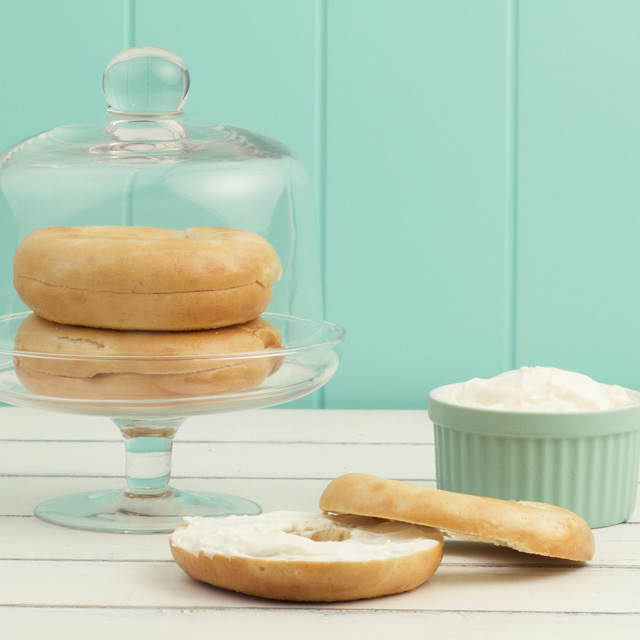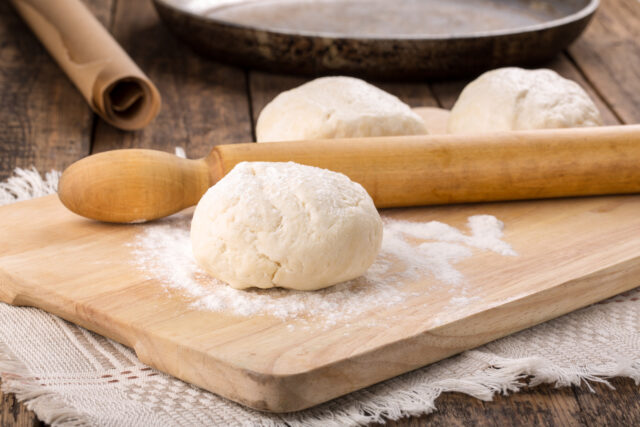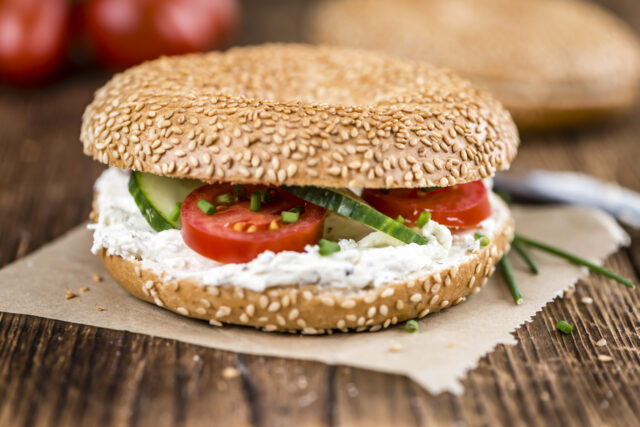
Bagels Are a Perfect Fit For Life On the Go
Let’s face it carbohydrates get a pretty bad rap these days. And I don’t totally disagree with the claims. That said, carbs are a valuable source of much needed energy, and sugars that are body needs to stay active, and our brains need to stay sharp. Balance is everything in a healthy diet. But most breads are fermented. And if you’re reading this blog you already know that we’re all about the power of fermentation.
Bread. Portable, versatile and cultured (literally and figuratively). Every region has they’re own take on it. With the recent awarding of the Nobel Prize in Physiology or Medicine to Yoshinori Osumi for his study of baking yeast on Autophagy, which is how cells remain healthy by absorbing unneeded components, with the goal of advancing the research of diseases commonly affecting the elderly from cancer to Parkinsons, I thought it fitting to discuss the fermentation process as it concerns bread-making. Let us continue down our road of zymurgy, the study of fermenting (you’re welcome).
This article will focus on bagels; their history and varieties. It will mark the first of two articles on sandwich bread’s importance in the world of fermentation. The next article will feature the other four of my top five favorite breads.
12 Steps to Fresh Bread Your Way
Fermentation is the third step in the twelve steps process of making almost any leavened bread. They are as follows:
1. Measuring
2. Mixing
3. Fermenting
4. Kneading (or as the real bread fans call, punching)
5. Scaling
6. Rounding
7. Resting
8. Shaping and panning
9. Proofing
10. Baking
11. Cooling
12. Storing
In bread-making, the fermenting of the dough is known as rising. This is the step where it sits relatively untouched and covered to culture it in a moist environment. At this stage the yeast converts the starches and sugars into carbon dioxide, a slight amount of alcohol as well as acetic and lactic acid. The longer the fermentation stage lasts the more effective the acids become. Coupled with a lower temperature fermentation environment, the final bread with not only last longer but take on a more complex flavour. Then during the next step, gluten is produced through punching. If overworked the dough will become to stiff resulting in a dense bread. This is why resting often done in two stages, a first and second rest is crucial.
Bagels, From Poland the World
Bagels got their start in Poland, where the first written record from 1610 tells of them being given to pregnant women and their round shape was thought to represent luck in child birth and a long life. They were given as a gift to the Polish King at the time, Jan Sobieski for his successful defeat of Turkish invaders. Or so the legend goes…
Bagel shaped bread can be found in artworks dating back to ancient Egypt and Syeia as well however. What is certain is that the German migrants coming east into Poland brought with them ‘pretzel brat’, a very similar dense, chewy bread, not the dry crunchy snacks you find bagged in supermarkets. It was during this time, in the fourteenth century that they were first written as obwazanek and eaten at lent, by the then Queen Jagwida giving birth to another creation story. These would have only been available to nobles and the elite as the flour used was a white refined wheat variety not the coarse rye wheat eaten by the peasants of the day. Give me the rye any day.
“Sorry for the Interruption.” “No problem.”
One of the things that makes bagels unique, or pretzel brat for that matter, is that the fermentation process, while generally using a considerably higher ratio of yeast than most bread as well as often containing some malt. This coupled with an aggressive kneading step the bread is given a short first rise and the resting stage is interrupted abruptly by boiling the formed dough into a water and bicarbonate bath.
The word obwazanek is derived from the Polish for ‘parboil’ This is what gives a slightly sticky, almost crisp shell, which should be deep brown in colour after it is baked. This signature shell helps preserve and protect the bread allowing it to be dunked in broths and teas to bring it back to a wonderful texture if they become stale.
In modern times, especially in North America, they are deeply connected to the Jewish population, who centuries ago were forbidden from baking bread throughout most of Europe as the Christian church has a deep sacramental relationship to bread, and Jews were seen as opposed to the church. Poland, as early as the 13th century was a very accepting and tolerant country and quite secular in an otherwise widely religious continent.
In spite of this Christian bishops passed a decree allowing Jews to only produce baked goods that had been boiled, suspecting that they would secretly poison the bread. This happened as a result of the Polish prince Boleshaw earlier allowed Jews to begin baking just as any other European.
Have Hole Will Travel
Early artworks showed bagels being strung through the hole in the center and carried by travellers. By the beginning of the last century a large European-Jewish population was making it’s way to the eastern shores of North America. Although at the time other than a small minority of orthodox Jews the majority were keen to blend in to the rest of the population. By the early 1900’s East New York had dozens of Jewish bakeries producing bagels.
It wasn’t until after the war that this little known bread took off. Bagels began to be featured in women’s magazines and enjoyed by businessmen as a rough and ready food for an ever more fast paced lifestyle. With freezers making their way into households people soon found out that unlike most breads they don’t lose their flavour after they’re thawed.
Another town renowned for it’s bagel culture also has a deep history to the Jewish people. Along with their smoked meat and poutine, Montreal is a bastion of the bagel. Interestingly while sharing a similar texture to their New York cousins, the Montreal bagel is made with egg and a dash of sugar making them slightly sweeter and a touch more airy.
From smoked salmon to cream cheese, pastrami and cheese to maple syrup, the bagel wraps up anything nicely and makes a sandwich that can hold up to a crowded train ride and still be looking great by lunch.






